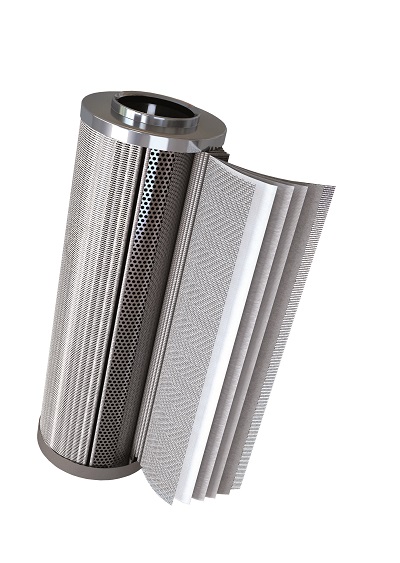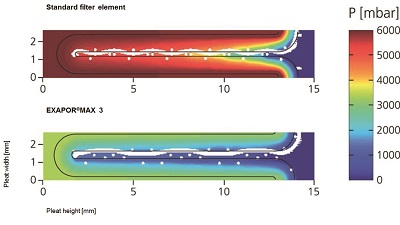Argo-Hytos, Kraichtal, Germany, has announced a new filter-element series that reportedly offers significant performance improvements over the company’s current Exapor Max 2 elements. The new-generation series, called Exapor Max 3, will be officially introduced at the Hannover Fair in April.

According to company engineers, development of the premium filter element series mainly focused on further enhancements in technical performance. The product also includes redesigned labeling to better suit customer preferences.
The Exapor Max 3 element reportedly raises the bar in terms of pressure loss, dirt holding capacity and flow fatigue resistance. In doing so, the power density of a filter element significantly increases. As a result, users can often switch to smaller filter elements in the same application, thus saving costs and installation space. The new series will be available in filtration ratings of 5 µm, 10 µm and 16 µm.
Dirt holding capacity
The absolute dirt holding capacity of the Exapor Max 3 also increased. This is due to a significantly improved specific dirt holding capacity from approximately 14 mg/cm² to >16 mg/cm² — a 15% increase. Benefits for the customer include longer service life and better machine availability, according to Argo-Hytos officials.
How was such an improvement possible? According to the company, it is due to a new filter element bellows structure that was developed based on prior experience, extensive simulation of design concepts, and tapping into the technical expertise of key suppliers.
The exact coordination of individual filter materials plays a decisive role. For the first time, the newly developed filter bellows structures also use nonwoven materials with a multi-phase structure — or a so-called gradient structure.

Construction involves a multiple gradation of the fineness in the filter bellows structure, which is not limited to the number of material layers. This prevents premature blocking of individual layers and ensures more uniform and, above all, better use of all nonwoven materials. This new, precise coordination of the individual layers leads to improved dirt holding capacities and an associated longer service life in customer applications.
Flow fatigue strength
Precise matching of the new nonwoven materials to the well-proven hybrid supporting fabric used in the predecessor series also leads to a significant reduction in pressure loss of more than 20%. This hybrid support fabric has plastic wires in the load areas (instead of typical stainless steel wires) and construction is based on a special weaving technique. The advantages of this fabric include excellent pleat channel formation for pressure loss optimization, and better flow fatigue strength. The possibility of wire breaks during alternating loads (such as volume flow changes) which can plague pure stainless steel meshes in some applications, are therefore no longer an issue with the new premium Exapor Max 3 series.

A wide range of sizes will be available, for example from small filter elements for steering-gear applications to large filter elements for injection-molding machines. That includes both standard catalog versions and individualized products precisely matched to a customer’s available installation space.
Extensive empirical tests carried out by Argo-Hytos on various element sizes have established a large database for the planned start of series production. Thus, the company will be able to supply customer-specific designs with a high degree of reliability even before the official start of series production.
In addition to technical performance improvements, the appearance and outer label area were revamped and customization possibilities greatly expanded. With the help of new printing techniques, full-surface colored imprints are now possible per customer request. That can include not only the customer logo and type designation. Now, additional information such as operating conditions and installation instructions can be displayed on the label surface.
ARGO-HYTOS
www.argo-hytos.com


Leave a Reply